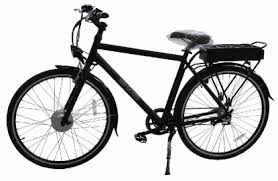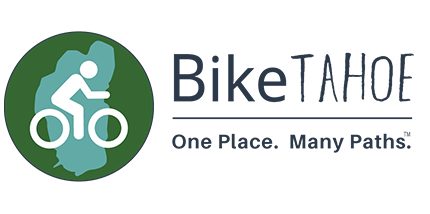Useful electric bike types and riding guidelines.
Electric powered vehicles are a top-of-mind topic today among industries, governmental agencies and consumers; and electric bicycles or e-bikes are no exception. It is useful to know before you go riding on an e-bike about their various types, capabilities and laws regarding their use.
California Leading the Way
The state of California is leading the way by defining electric bicycle types with classifications in their Vehicle Code passed into law and effective January 2016. The current regulations define an “electric bicycle” as a bicycle equipped with fully operable pedals and an electric motor of less than 750 watts (1.01 hp), and separated into three classes:

Commuter e-bike
- Class 1 is a pedal-assisted electric bicycle providing motor assistance only when the rider is pedaling with a maximum assisted speed of 20 mph.
- Class 2 is a throttle-assisted electric bicycle that may be used exclusively to propel the bicycle up to a maximum 20 mph.
- Class 3 is a speed pedal-assisted electric bicycle providing assistance only when the rider is pedaling (no throttle) with a maximum 28 mph, and equipped with a speedometer. The assist speed refers to the point at which the motor cuts off; a rider can go faster, but only under pedal power or with gravity.
Under the California law, Class 1 and 2 e-bikes are allowed on off-street multi-use paths, while Class 3 is restricted to roads and on-street bike lanes. Helmets are mandatory for Class 3, but license plates are not required. E-bikes must have permanently affix labels indicating Class 1, 2 or 3. The law does not prevent local authorities from further restricting e-bike use if necessary and only applies to roads and bike paths governed under state and federal vehicle code. The rules for e-bikes on public roads, sidewalks, and pathways are under state jurisdiction and may vary by state.
This law does not address riding on native surface paths in parks and open spaces – like mountain bike trails.
E-bikes on trails

Mountain e-bike
Presently, the United States Forest Service (USFS) manages approximately 160,000 acres of National Forest lands surrounding Lake Tahoe containing roughly 200 miles of National Forest System Roads and 350 miles of National Forest System Trails. The Travel Management Rule, law 36 CFR 212, defines e-bikes as motorized vehicles under that law when operated on National Forests. As such, e-bikes are allowed on roads and trails designated for motorized public use having designations indicating: “…open to all vehicles”, “…open to vehicles 50″ or less in width”, and “…open to motorcycles only”, and can be found on the Lake Tahoe Basin Management Unit Motor Vehicle Use Map. Otherwise, e-bikes are prohibited on non-motorized roads and trails.
In the Tahoe basin, one place where E-Bikes are allowed is Lake Tahoe Nevada State Park. The Spooner Lake Backcountry contains 50 miles of trails, and all of those that are open to bikes are open to E-Bikes. The most popular ride is the spectacular 14-mile Marlette Flume trail. A shuttle runs from the Tunnel Creek Cafe to the Spooner Lake entrance of the park for those that want an easier alternative to riding back uphill to Spooner Lake.
Clearly, electric bikes or e-bikes offer increased potential for low-cost transportation and quality recreation experiences that can connect people with their National Forests. However, as bicyclists and those new to the activity, we need to know about the laws and the appropriate places to ride for reasons of safety and compliance with existing laws.
It is highly probable electric bicycles or e-bikes are here to stay and will continue to evolve technologically and grow in use. The future of both is uncertain. Therefore, it is important that we have patience with that evolution and comply with existing laws as jurisdictions monitor and learn more about the technology and the public’s needs and interests. Overtime, the jurisdictions can make appropriate adjustments to their laws, “if and as needed, in the future.”
For specific USFS e-bike policy, contact Ty@biketahoe.org.
Sources: Electric Bike Association, California Bicycle Coalition, United States Forest Service, and Nevada State Parks.


